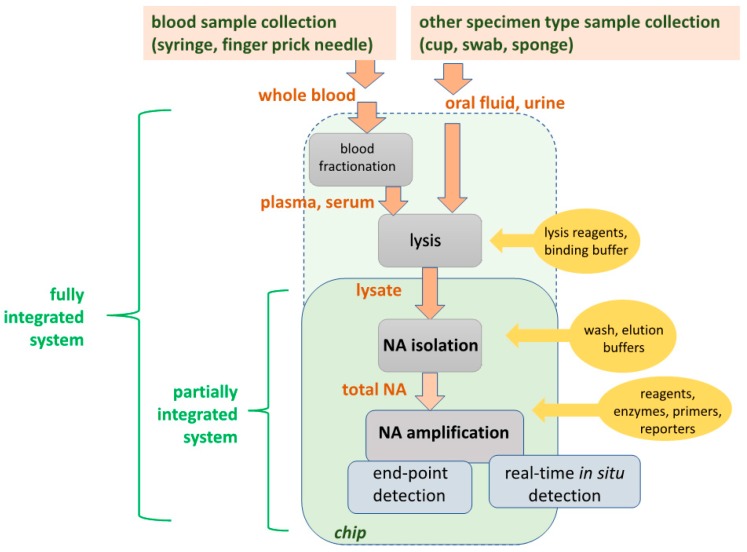Figure 1.
Processing steps (‘unit operations’) of Nucleic Acid Amplification Tests (NAATs) molecular diagnostics. Plasma from whole blood samples, or raw oral fluid or urine, is lysed to release nucleic acids (DNA or RNA) from virus or cellular pathogens. The soluble nucleic acid is isolated in a purified, concentrated form. Pathogen-specific nucleic acid is enzymatically amplified using PCR (polymerase chain reaction) or isothermal amplification methods. The amplification products (a positive test result) are detected either after amplification (end-point detection) by color dyes sensitive to DNA, or in real-time (during amplification) by, e.g., fluorescence due to intercalating dyes, or bioluminescent reporters coupled to the amplification reaction. Reagents (enzymes, primers, reporters) and buffers are required at the steps indicated.

